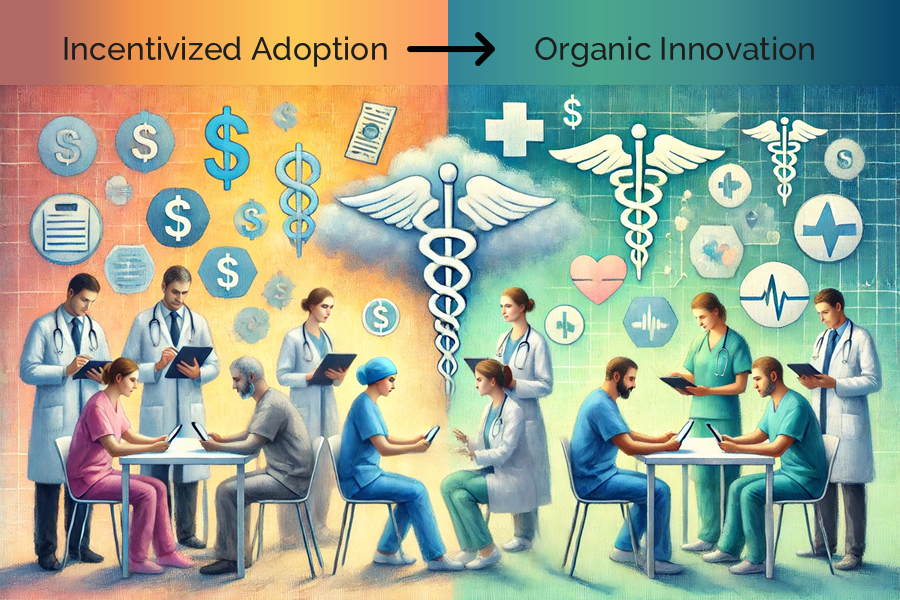Payers and the Holy Grail of Interoperability
2020 is positioned to be a significant year and decade in healthcare. One that can have significant impact on how healthcare will operate and its stakeholders moving forward.
Why do we believe that? Let’s start with a handful of acronyms and dates:
- 2005
- PSQIA – Patient Safety and Quality Improvement Act
- 2009
- ARRA – American Recovery and Reinvestment Act
- HITECH – Health Information Technology for Economic and Clinical Health Act
- PPACA - Patient Protection and Accountable Care Act
- 2015
- MACRA – Medicare Access and CHIP Reauthorization Act
Now these are a handful of legislations that we believe have had an impact on healthcare, there are plenty more, but we chose these because each of them had an intent of directly benefiting the patient. In addition to benefiting patients, one additional item that all these acts have in common is that none of them fundamentally impacted how health insurers conducted business or operated when it came to members/patient experience and benefits.
In 2019 a specific legislation was proposed- CMS-9115, otherwise known as Interoperability and Patient Access Rule. Although the comment period closed in June 2019, this is still a proposed rule until finalized. The finalization of this rule is significant for healthcare as it will bring payers fully into the interoperability mix, enabling exchange of clinical and administrative data to help patients.
Being able to close the loop on data has been one of healthcare’s holy grails, paving the road for creating the ability for a truly coordinated medical record. Now, we are not here to discuss whether providers use this coordinated medical record. That will have to be for another blog. We are here to discuss the impact of this legislation on payers.
Patient Access Rule (CMS-9115) and Holy Grail of Interoperability
Let's look at the basics of proposed rule CMS-9115. The proposed rule is designed to help patients move from plan to plan and provider to provider while maintaining clinical and administrative information throughout their journey. The proposed rule enables:
Patients – To have access to their health information electronically without special effort by requiring payers to make data available through an API
Providers – Ensured access to health information about their patients, regardless of where the patient may have received care. The proposed rule prevents providers from restricting the flow of information.
Payers – Medicare Advantage plans, Medicaid plans, and CHIP programs shall make member electronic health information available through an API. The proposed rule to share information applies to current and previous members.
Paving the Way for More Efficient Care
The goal of CMS-9115 is to assist all parties involved in delivering care to have the appropriate information necessary to coordinate care, analyze population health trends, outcomes, and costs. The rule should help pave the way for improved patient access and care, reduce provider burden, and drive down the total cost of care. It’s a lofty goal, and if we know anything about proposed CMS rules, they don’t always achieve the desired outcomes.
Will Penalty be a Strong Motivator?
However, we do believe that this will be different. CMS-9115 is tightly related to previous laws, including the 21st Century Cures Act, allowing for up to $1M penalty per information blocking violation, which includes the lack of interoperability capabilities. Will these penalties have enough teeth to prevent information blocking? Only time will tell.
Many still consider interoperability a buzz word, and even more don’t believe that healthcare will ever truly get to the point of true interoperability. Call us eternal optimists, but we do think it will get there. Going back to our previous blog, FHIR and interoperability are still traversing the hype cycle, but we believe this is the decade that it will come to fruition.
What does this mean in the short term?
Similar to how the HITECH and ACA drove significant investments in IT infrastructure for providers, CMS-9115 will push payers to adopt the technology to meet the demands of the rule. However, as payers adopt, it will drive additional participation in interoperability, both sharing and requests. If payers are paying to have the capabilities to meet CMS-9115, there will be more and more information requests across all stakeholders to take advantage of the investments that are made.
Blending of Payer and Provider Data Skills
Once CMS-9115 has a complete foothold, those who can best use the data will genuinely be able to impact the patient’s experience from both administrative and clinical experience perspectives. It is safe to say that payers currently are really good at using administrative data to conduct their business and manage their members. In contrast, providers use clinical data to perform their work. We believe you will see a blend of required skill-sets moving forward across both payers and providers to take advantage of the data moving forward.
We will be stating the obvious, but in the short term, you will find organizations fighting to delay the inevitable and living in a world of denial. Others are already prepared for interoperability and looking ahead into processes and workflows that can be improved with these new capabilities and the potential influx of data.
To start a new year and reflect, are you working for a payer that is living in a world of denial or one that is forward-looking and thinking about innovations that can help your healthcare consumers for years to come with the pending rule?
Regardless, it’s the healthcare consumers that will hold the keys for everyone. They will drive the success of the payers who have consumer’s best interest in mind. Healthcare consumers have an exciting future to look forward to.









